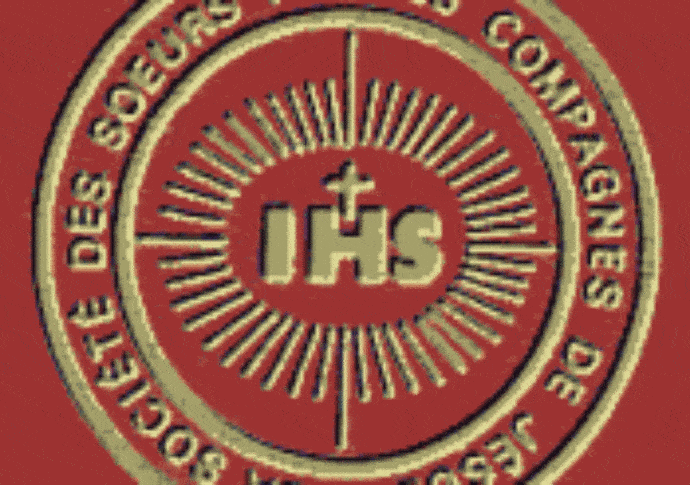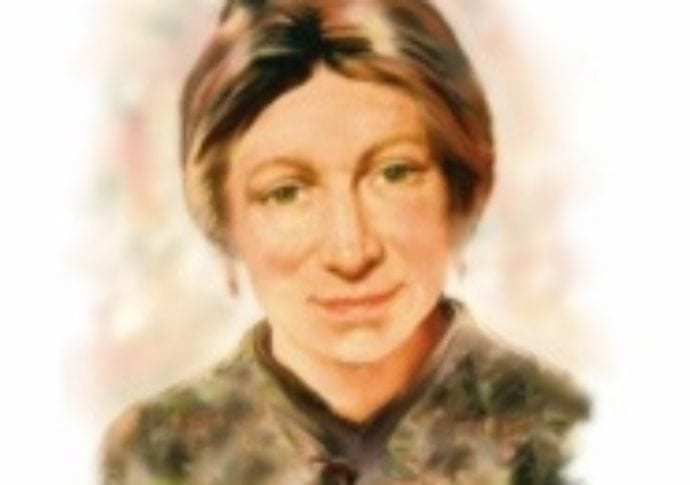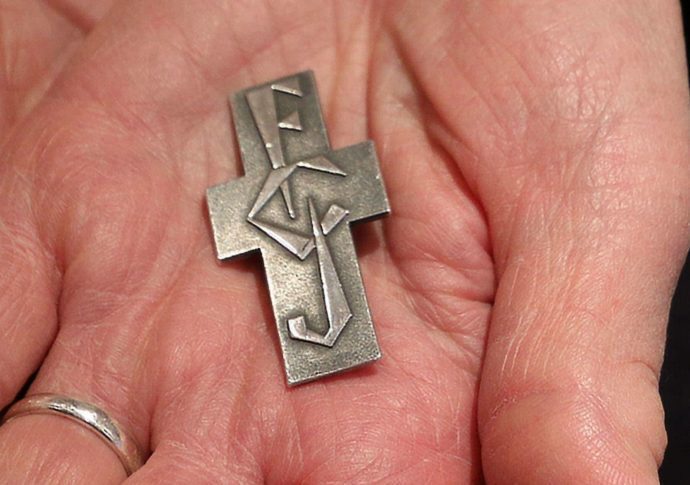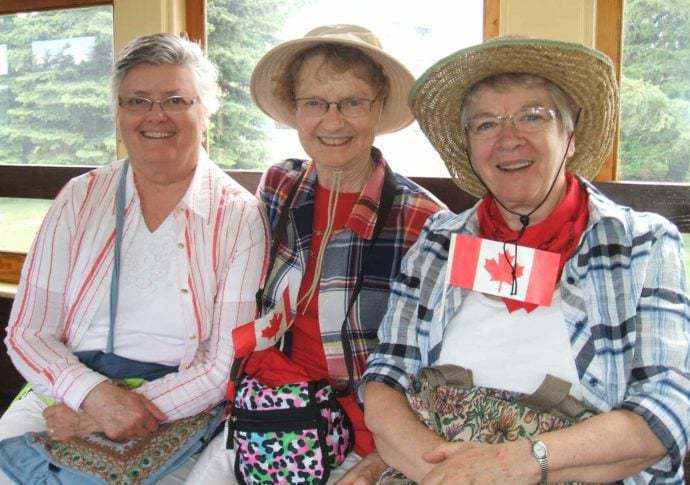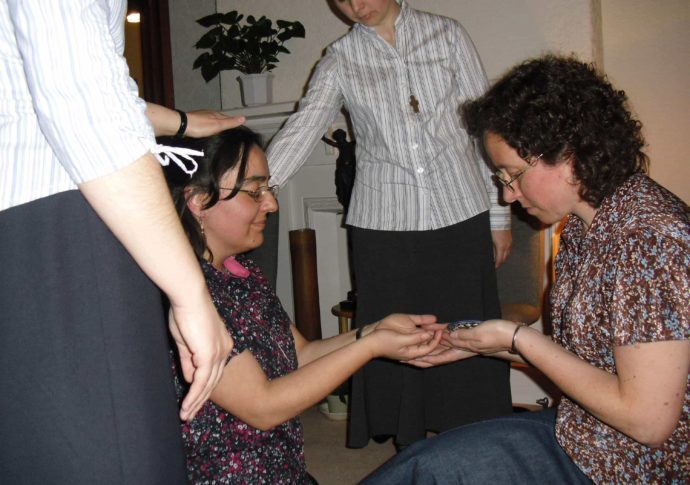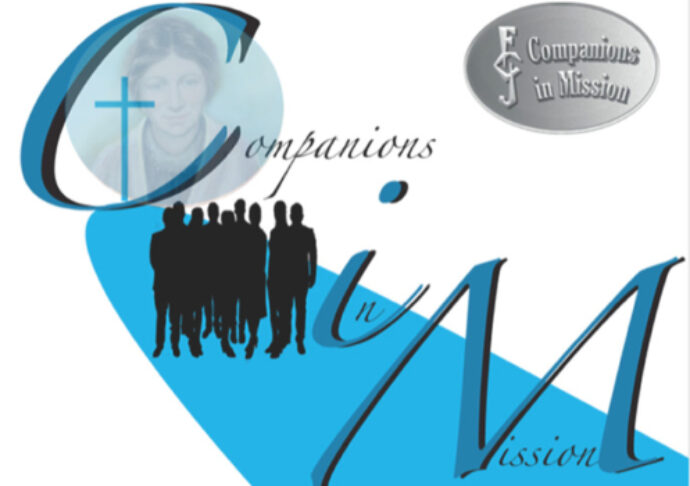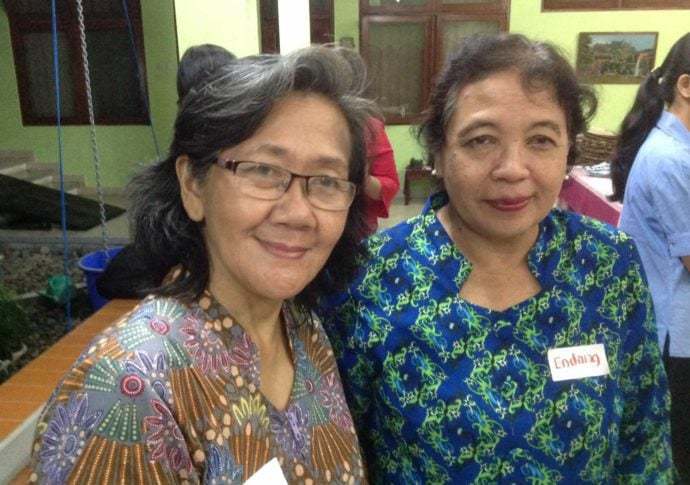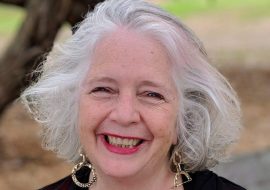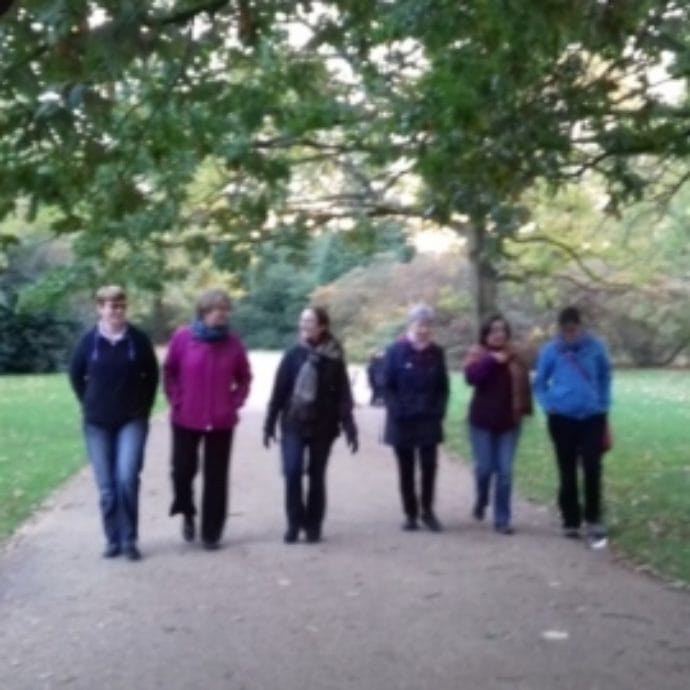Ann Rennie, a Companion in Mission and staff member at Genazzano FCJ College in Australia, offered this prayer reflection at the school’s morning prayer before the school was closed.
“…No one can be really esteemed accomplished who does not greatly surpass what is usually met with. A woman must have a thorough knowledge of music, singing, drawing, dancing…”
“All this she must possess,” added Darcy, “and to all this she must yet add something more substantial, in the improvement of her mind by extensive reading.”
The above excerpt is from Jane Austen’s Pride and Prejudice and fictively identifies those attributes becoming an 18th century English lady. Those who have read the book or seen the many filmed iterations will understand that women of a certain class were educated in the fine arts and had some understanding of the wider world that was not available to those of the working classes. Although this classic novel identifies the pride and prejudices of some of the high-born, it also demonstrates the lessons and expectations that were drilled and instilled in children born into titled or wealthy echelons.
This was the world into which Marie Madeleine d’Houët was born across the English Channel in France in the small town of Châteauroux in 1791. Her family had a long and pedigreed history and a family crest and motto: Bien sur et laissez faire. Translated this means: Do the right thing and do not worry about what others think. The family’s Catholic faith was central to how they lived and how they treated others. This was evidenced when, after three months in prison, her father, Sylvan de Bengy was released by the revolutionaries as he was so esteemed by his local community because of his fair and kind treatment of all. How fortunate we are to have as our foundress a woman of wisdom and compassion who lived out the imprimatur of this motto and refused to be constrained by social expectations or obstacles when she sought to found the Society, Faithful Companions of Jesus in 1820.
As a child Gigi (as Marie Madeleine was called) would have been introduced to music. It would have been part of her Catholic upbringing becoming familiar with hymns and liturgical music such as O Celeste Flamme and a knowledge of the popular airs and composers of the day. Her mother ensured she had a solid understanding of the domestic arts and we know that she would later develop a good head for business management as she managed her country estates and was la bonne dame to those who worked her landholdings.
During the 18th and 19th centuries the pedal harp flourished in the salons and drawing rooms of Europe and privileged young boys and girls often came to learn the harp after having first studied the piano. This usually occurred between the ages of ten and twelve. We do not know how proficient Marie Madeleine was with the harp, however, we are fortunate to possess the harp she played, located now in the Heritage Room in Paris, and to know that our foundress understood and appreciated the balm and beauty of this instrument. We can happily imagine the teenage Marie Madeleine entertaining her family, friends, visiting clergy and others of the l’ancien régime. plucking the strings melodically to an appreciative audience. We know that Marie Madeleine’s harp was made by the famed Parisian luthier Jean-Henry Naderman who supplied the Royal Household, including Marie Antoinette!
The harp is the oldest of all instruments of human making and its genesis came about after the hearing the sound of a hunter’s plucked bow string. The oldest documented references to the harp are from 3000 BCE in Mesopotamia and there are many references to the harp and lyre in the Psalms written by King David such as 43:4 On the harp I will praise you, O God.
The poet Edna St. Vincent Millay writes poignantly of an ailing Irish mother in The Harp Weaver:
Her thin fingers, moving
In the thin, tall strings
Were weav-weav-weaving
Wonderful things.
Our cultural associations with the harp are often to do with the heavenly and angelic, strings plucked to embody an ethereality, beauty or transcendence. Occasionally, it can be mournful and melancholic. Although not used so often in popular music, there is a notable introduction with the harp in The Beatles She’s Leaving Home. And we know of its popularity for weddings and in small classical ensembles, as well as featuring in Tchaikovsky’s Swan Lake and The Nutcracker cadenza for harp which features in the ballet.
How fortunate are we at Genazzano to have a wonderful harp teacher. Some students started playing her in grades 3 and 4 and one of them recently played beautifully during the Offertory Procession of the College Opening Mass for 2020.
In this bicentenary year we thought it would be a good idea to make the link between Marie Madeleine and her love of the harp and to acknowledge that we are carrying on this fine musical tradition. The college purchased a harp in 2019. This was made by the famed Chicago manufacturer, Lyon and Healy, who have been producing harps for the world since 1889, coincidentally the same year that Genazzano was founded and the Eiffel Tower opened.
As we celebrate the founding of the FCJ Society in Amiens two hundred years ago, we will continue to enjoy the sonorous strains of the harp at school gatherings. We will be reminded of Marie Madeleine’s love of music and its power to transcend time and place, its magnificent democracy and borderlessness and the way it speaks to the soul.
Read more about Marie Madeleine, her love of the harp and music in Issue #8 of the Marie Madeleine newsletter, available to download:



